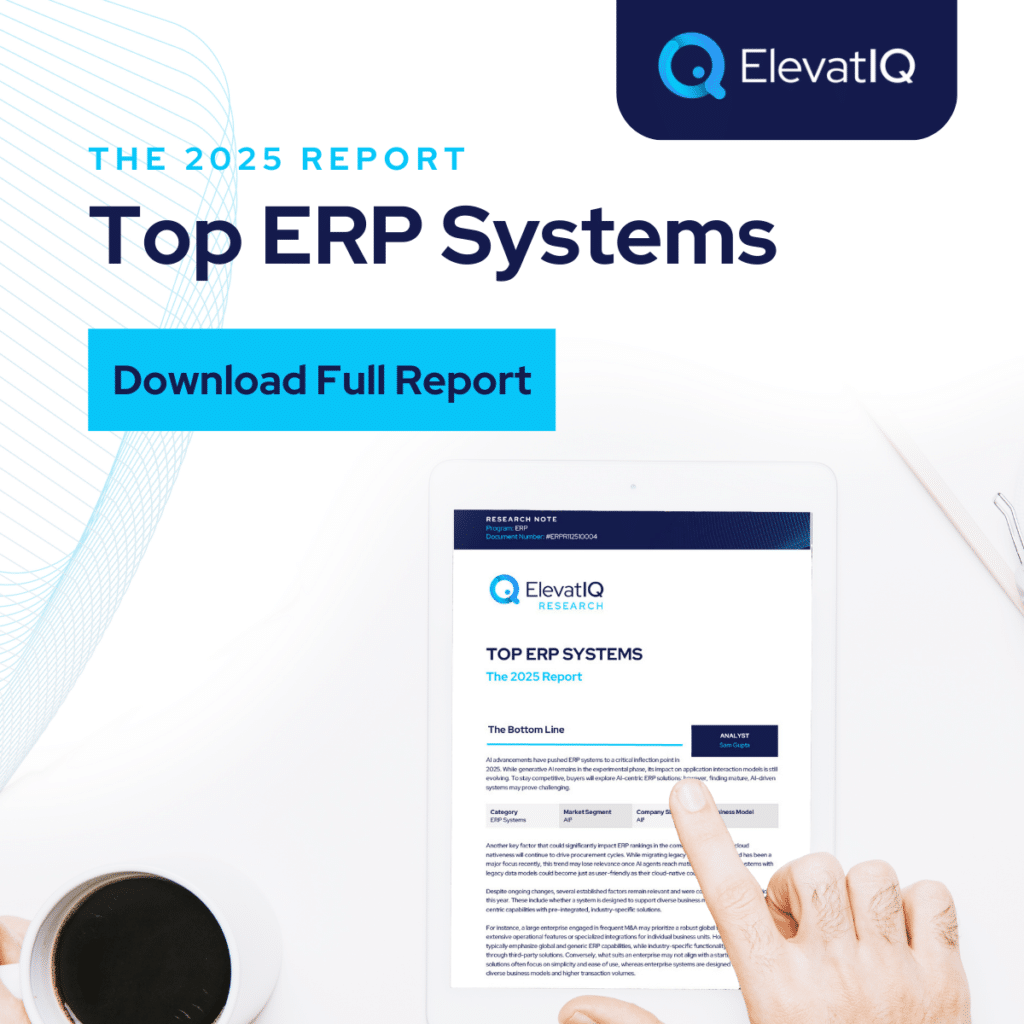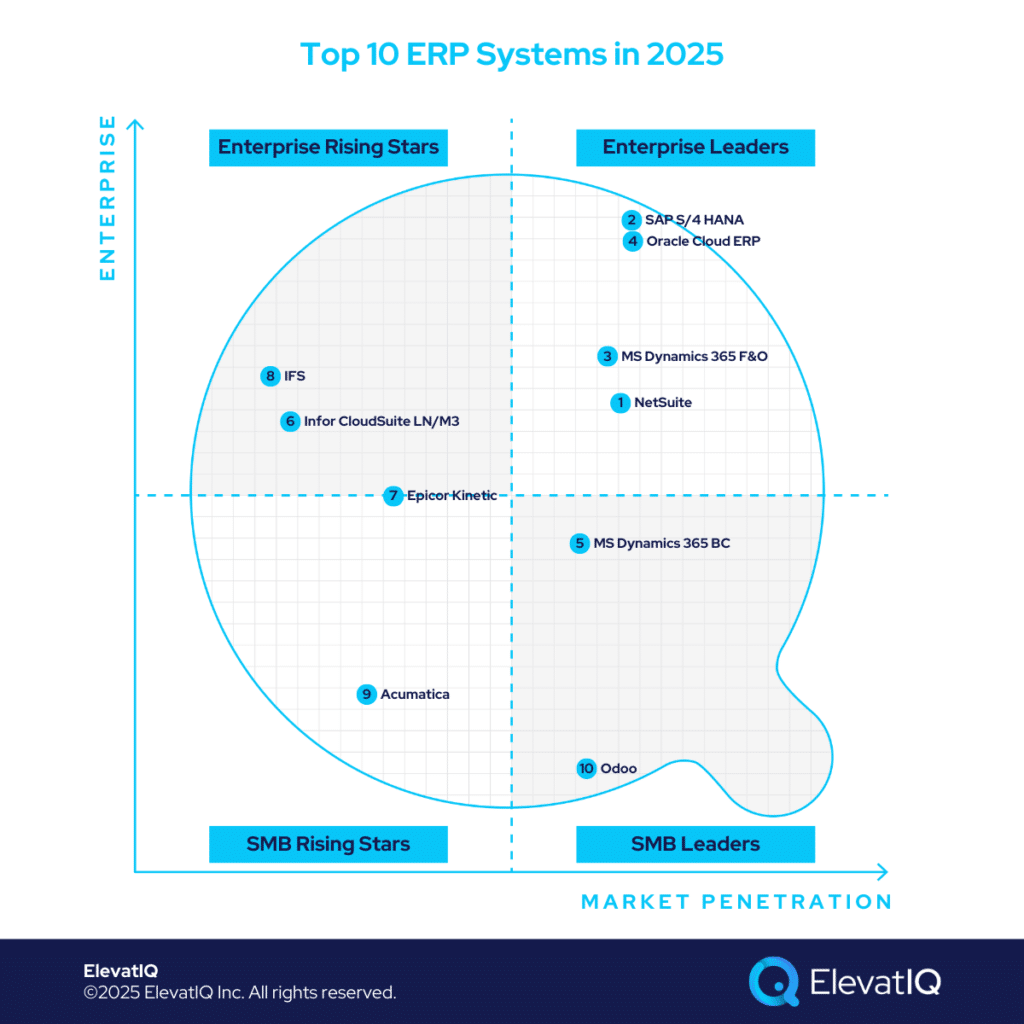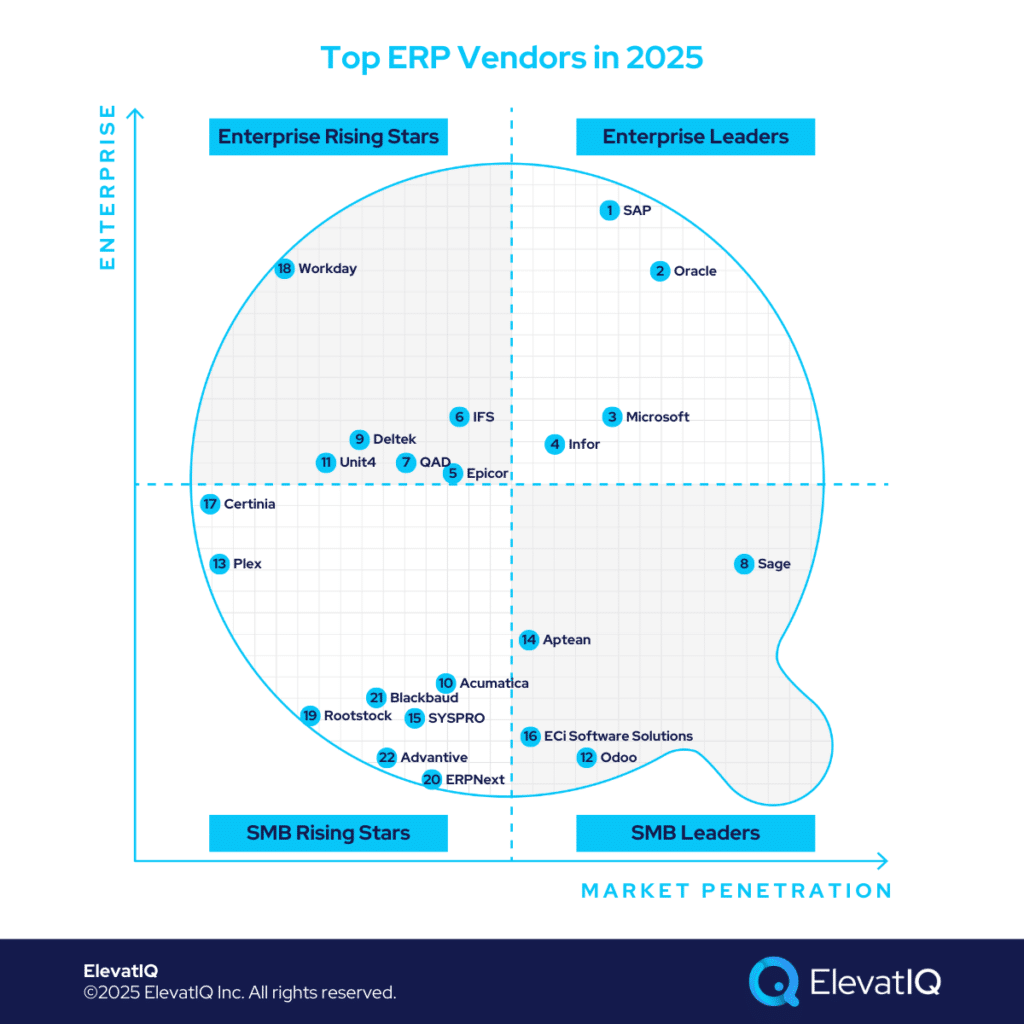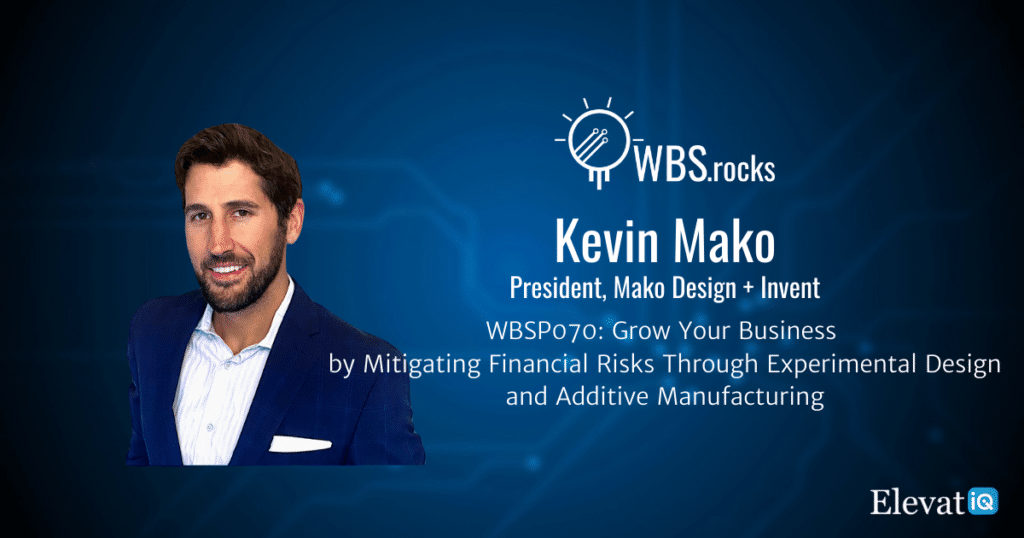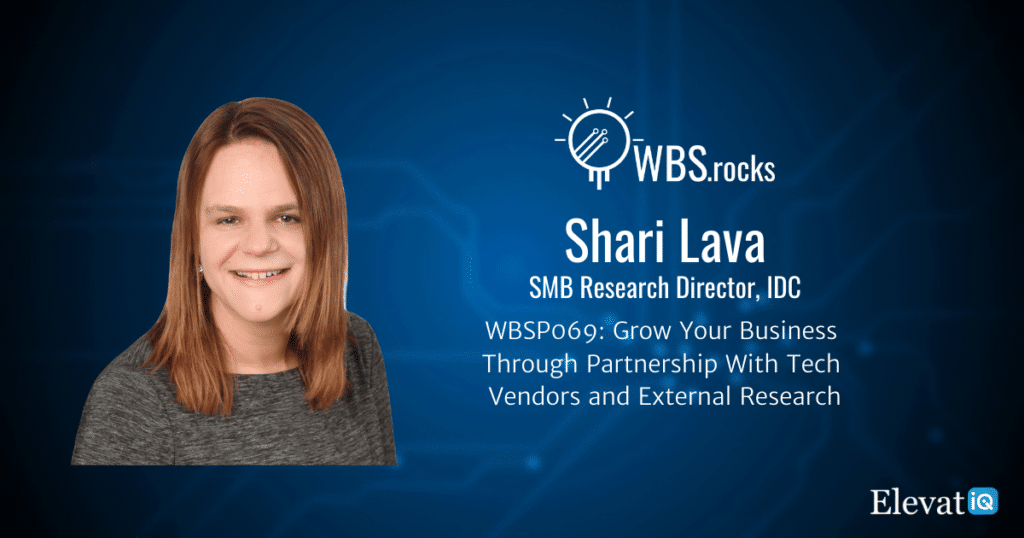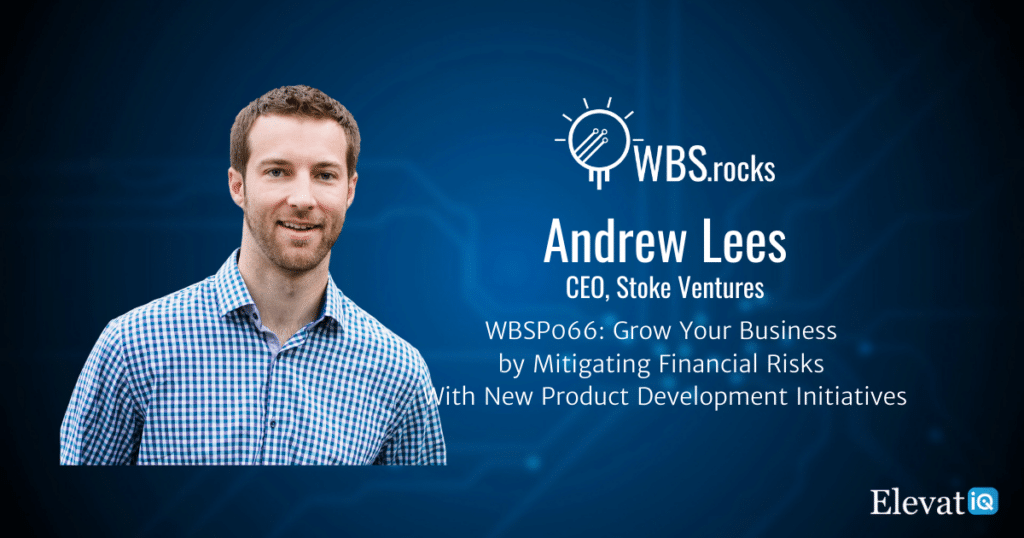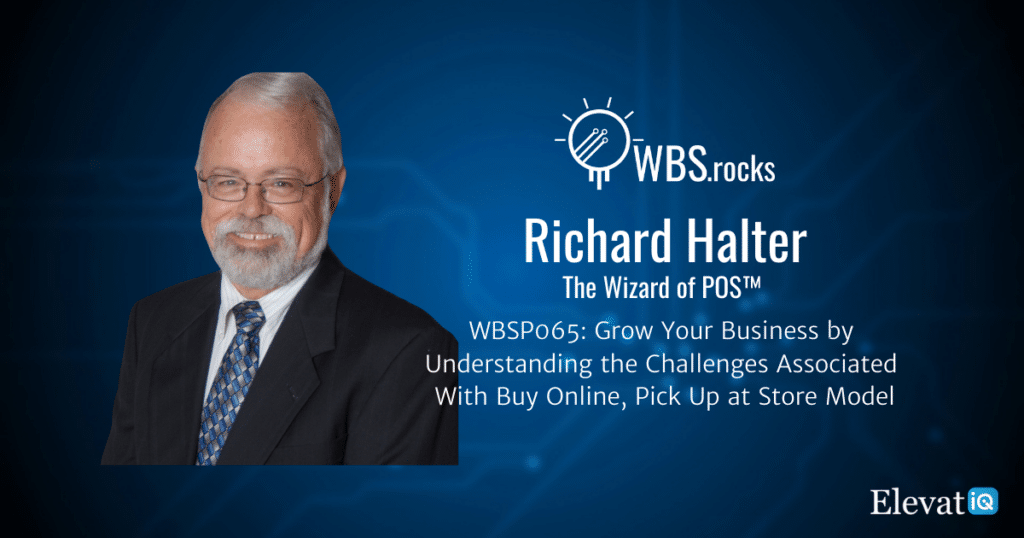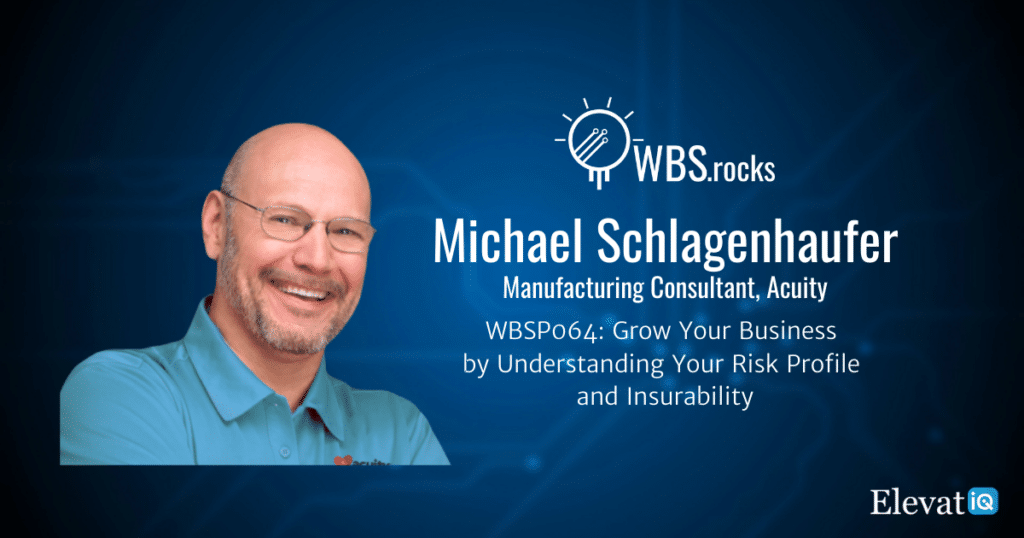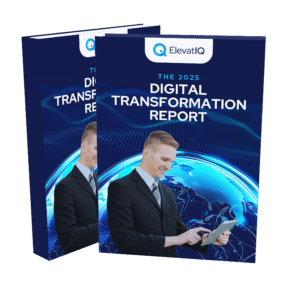In this episode, we have our guest Christiano Gherardini, who discusses the importance of costing granularity and why it is crucial to understand your products’ profitability. He also talks about various costing scenarios and the implications of choosing an incorrect costing method. Finally, he has had a chance to talk about multiple costing concepts, including macro and micro variance analysis, costing layers, backflushing, rework, costing concurrent resources, and much more.
Chapter Markers
- [0:52] Intro
- [1:56] Personal journey and current focus
- [3:00] Implications of choosing incorrect costing methods on growth
- [4:22] Manual costing processes vs automated
- [6:31] How to choose appropriate costing methods for your business?
- [9:07] Costing methods scenarios and case studies
- [16:29] Costing methods and their granularity across different industries
- [25:00] Macro vs micro variance
- [27:15] The nuances of labor cost allocations
- [30:08] Product costing limitations of legacy ERP systems
- [35:59] The implications of Backflushing
- [36:54] Closing thoughts
- [37:22] Outro
Key Takeaways
- If you analyze costing, it can get very, very granular, and when you’re using manual methods, you lose a level of detail. In fact, the ability to refresh it and see how the price of the supply chain which is off the charts right now in terms of price increases how that impacts costing.
- There are so many cost elements, and again, as you move into a more automated system that allows you to land them in there to load those costs and then refine as opposed to having to remember everything every time, so it is compromising to have a manual costing system, and quite honestly it’s typically not going to have the level of accuracy of an automated system where you can see changes very very quickly.
- Unless it’s a mature business that really understands their costs, approaching standard costing is difficult because standard costing expects that you have an Excel spreadsheet that articulates materials, labor, routings, and operations.
- You generally pick a costing method for the company, but you can have different costing methods for different products.
- In a costing category, you typically are seeing three different cost layers for material, three for labor, and three for machining. Most people think it’s just the price you pay for your vendor, but in a standard costing model, we can have that material cost, and then we can also have a fixed overhead, such as the cost for that warehouse.
Subscribe and Review
Apple | Spotify | Stitcher | Google Podcasts | Deezer | Player FM | Castbox
About Chris
Chris is an experienced Microsoft Dynamics & Cloud Practice Owner with a demonstrated history of delivering integrated ERP & CRM solutions and leading companies through a digital transformation. Since 1994, Chris has built the business around an exclusive focus on the Microsoft Dynamics portfolio of solutions, including Dynamics 365 Finance & Supply Chain (Dynamics AX), Dynamics GP, Dynamics 365 Business Central (Dynamics NAV), Dynamics SL & Dynamics 365 Customer Engagement.
Resources
- Connect with Chris
- Connect with Turnkey Technologies
Full Transcript
Christiano Gherardini 0:00
You look at the data after a month. It’s okay. I’m close to tweaking as opposed to going into a big data study that can take a lot of effort. And that’s why the comment about standard costing is very complex for the organization that requires a lot of labor versus FIFO, where it’s going to accumulate everything, and it’s going to be the actual costs of
Intro 0:16
Growing a business requires a holistic approach that extends beyond sales and marketing. This approach needs alignment among people, processes, and technologies. So if you’re a business owner, operations, or finance leader looking to learn growth strategies from your peers and competitors, you’re tuned into the right podcast. Welcome to the WBS podcast, where scalable growth using business systems is our number one priority. Now, here is your host, Sam Gupta.
Sam Gupta 0:52
Hey everyone, welcome back to another episode of the WBS podcast. I’m Sam Gupta, your host, and principal consultant at a digital transformation consulting firm, ElevatIQ.
Cost accounting is a complex topic, you have so many different choices, and sometimes it’s hard to decide which method may be appropriate for your business. If you choose an incorrect counting method, you will get a significant variance and require more admin effort to discover the source of variance and tweak the processes to reduce it. The incorrect costing method could also mean that you don’t have a true sense of profitability for your products.
In today’s episode, we have our guest Cristiano Gherardini, who discusses the importance of costing granularity and why that is important to understand the profitability of your products. He also talks about various costing scenarios and the implications of choosing an incorrect costing method. Finally, he has had a chance to talk about multiple costing concepts, including macro and micro variance analysis, backflushing, rework, costing concurrent resources, and much more.
Let me introduce Chris to you.
Sam Gupta 1:56
Chris is an experienced Microsoft Dynamics and cloud practice owner with a demonstrated history of delivering integrated ERP and CRM solutions and leading companies through a digital transformation. Since 1994. Chris has built the business around an exclusive focus on the Microsoft Dynamics portfolio of solutions, including Dynamics 365 Finance and Supply Chain, Dynamics AX, Dynamics GP, Dynamics 365 Business Central or Dynamics NAV, Dynamics SL, and Dynamics 365 Customer Engagement.
With that, let’s get to the conversation.
Hey, welcome to the show, Chris.
Of course, my pleasure.
Just to kick things off. Do you want to start with your personal story in current focus, Chris?
Christiano Gherardini 2:39
Sure. So I’m Chris Gherardini. I’m the president and owner of Turnkey Technologies. I started this company back in 1994. And after 27 years, I am a very focused Microsoft Dynamics ERP partner and implementation partner. So I like to solve, and I’m a technical guy that gets to do accounting software and ERP software all day long. So it’s quite, quite pleasurable at this point.
If you analyze #costing, it can get very, very granular. And without an #ERP system, it could be very hard to manage.
Click to Tweet
Implications of choosing incorrect costing methods on growth
Sam Gupta 3:00
So, okay, amazing. So one of the standard questions that we have is going to be your perspective on business growth. When you think of the word business growth, what does it mean to you?
Christiano Gherardini 3:10
Business growth and I’m bullish, I actually have a very positive outlook, through the next three, five years, and you think about growth, there’s a lot of different growth, there’s revenue growth, there’s efficiency growth, there’s personnel based growth, but I think that the markets are strong.
And I think that the US economy is strong, and I think it’s going to support and in our industry, we’re seeing 25% standard industry growth. So that’s pretty amazing stuff.
Sam Gupta 3:35
So have you seen any specific growth challenges when it comes to utilizing a specific costing method, and that becoming a bottleneck to the business from the efficiency perspective from the growth per year perspective?
Christiano Gherardini 3:53
Sure. And I think costing is a hot topic. And if you do it wrong, it can compromise growth. Because what’s that mean? Well, maybe you overprice your product, maybe underprice your product. So if your costings are not accurate, and again, you lose business because you’re overselling, and that’s compromising to growth.
So absolutely costing is key to competitive advantage, in fact, to know you are margins precisely and moreover, even to know your best customers, you’re your most profitable customer. So it’s related to everything Sam, it really is.
When you’re using #manufacturing costing manual methods, you lose a level of detail. In fact, the ability to refresh it with the price increases of raw materials in real-time is nearly impossible.
Click to Tweet
Which costing methods require manual processes to be automated
Sam Gupta 4:22
So if we look at the state of a business, for example, let’s say if you have the management team or the CEO, they have never done manufacturing in their life, and all of a sudden they are doing manufacturing, that could be one scenario. The other scenario could be they might be doing the manufacturing on the spreadsheet, and now they are implementing an ERP system. Obviously, as in the case of any ERP system, things are going to be a bit organized.
They will be able to track the costing a bit more. So one of the trends that I typically see when I look at the businesses that are either on QuickBooks or spreadsheet is they would not be doing the costing appropriately. So what are some of the challenges that you have seen in the market for the businesses that have never either done manufacturing or might be coming out of either QuickBooks or spreadsheet?
Christiano Gherardini 5:15
It’s a great challenge for those organizations because as you really analyze costing, it can get very, very granular, and when you’re using manual methods, you lose a level of detail, in fact, the ability to refresh it and see how the price of the supply chain which is off the charts right now in terms of price increases how that impacts costing and right away back to what I said it pricing, you could be committing to manufacturing and a price point you find out that all of a sudden the product price changed or the cost changed.
And your manual systems don’t refresh, and I think that is I said granularities, it’s just tough, it’s tough to manually to get all that data. And we think about how are they costing? Are they in Excel with QuickBooks? They may just be doing material costing, and they may not cost labor to production. But then they may forget costs. They may forget overhead and shop charges. They may forget equipment maintenance and machine time.
So there are so many cost elements, and again, as you move into a more automated system that allows you to land them in there to load those costs and then refine as opposed to having to remember everything every time, so it is compromising to have a manual costing system, and quite honestly it’s typically not going to have the level of accuracy of an automated system where you can see changes very very quickly, and that’s imperative in the market we’re in today frankly.
With automated system for #manufacturing costing that allows you to land them in there to load those costs and then refine as opposed to having to remember everything every time, manual costing system is limiting.
Click to Tweet
How to choose appropriate costing methods for your business?
Sam Gupta 6:31
Okay, amazing. So let’s talk about these costing methods, right? And that is always a slightly more debatable topic, at least from my experience, so when I talk to different CFOs, different accountants. And they always debate in terms of which costing method is going to be right for them, so describe different costing methods that we have and which are going to be situations in which these costing methods are going to be appropriate.
Christiano Gherardini 6:55
Different business systems support the standards, and some have a few advanced, but you know generally you’ll hear about LIFO, which is last in first out. You’ll hear about FIFO, which is first in, first out. You’ll hear about average costing. You’ll hear about standard costing, and there’s LIFO periodic and FIFO periodic, which are your standard and FIFO standard.
So you’re like, wow there’s six to choose from and how do I pick and you know a lot of people in the past you say ask your accountant and some of it’s based on your industry so again if I’m buying finished good products I buy and I normally sell people are taking a first in first out which means they’re chronologically reducing and consuming their inventory.
Christiano Gherardini 7:32
Some people, why would they pick LIFO? Well, they’re trying to maybe the price goes up, and they’re trying to reduce their margins on sales, and they’re keeping higher margin potential sale products in inventory still so so again, that’s a tax strategy.
Sometimes when they’re using LIFO where they’re trying not to recognize as much revenue average can make things simple for people. And again, if we’ve got high volatility, it’s up. Its down average gives them consistent margin recognition through the different periods as opposed to one month I made $1,000 the next month I made $10. So again, if you see that, that would be related to more of a perpetual where the cost may have changed dramatically from one period to the next.
Christiano Gherardini 8:09
Whereas average, say hey, we made $500 in both months, right because the cost was $500 between the two. And then as we get into the standard costing again the manufacturers again you know companies that use standard costing so again, they’re trying to consistently analyze margin across what they’re trying to establish as a baseline and sometimes standard is a guess, right, I think it’s $5, and they do some math to kind of prove that up.
But there’s a lot of iterations to continue to refine standard cost and again in an automated system where you land a standard cost, and if you’re granular about articulating the pieces that are in that standard cost well, then you can even map out an even more detailed and measure performance against these little cost layers and look at variances and tweak and refine and again there’s a high degree of precision in standard costing and even analyzing variances.
So again, depending on the business, if they’re high volatility and your pricing of the products that are coming in generally manufacturing versus just a distributor or so again, there’s a lot of conversation over how those different costing methods.
Unless it’s a mature business that really understands their costs, approaching standard #costing is difficult.
Click to Tweet
Costing methods scenarios and case studies
Sam Gupta 9:07
So let’s take some examples and some scenarios, right? So I don’t know if you’re going to have some stories. I’m actually going to tell you some stories, and then you can tell me whether I’m approaching this right or not.
So let’s say if I have recently graduated, and I am hired in a manufacturing company, and they have given me an assignment that you should be running an ERP initiative. Okay, I have read the things in my school. And obviously, conceptually, I understand what LIFO means, what FIFO means, what average means, what standard means.
But I don’t necessarily have experience in setting the standard for a company, and I am working in a manufacturing shop, and this manufacturing shop is a food manufacturer. I spoke to some of my accounting friends, and those friends told me that LIFO is an appropriate method. The costing method for me, what will be your perspective on this? Am I choosing the right method?
Christiano Gherardini 10:06
And honestly, LIFO is one of the least popular costing methods that I’ve seen in implementations, frankly, because last in first out, which means you’re leaving old inventory on the shelf, Well, okay, if there’s not an obsolescence factor to your inventory, maybe that’s not a big deal.
But certainly, you’re leading what would be perceived as the least cost item still sitting on the shelf because we expect the prices have gone up more recently. So what we’re doing is we do not recognize as much margin. Okay, well, again, it depends on the business. And maybe they’re profitable. And they’ve Oh. We don’t want as much revenue to be recognized.
But that would be my first reaction, and trying to understand is what was the rationale for that based on ownership? If the accountant says, Oh, no, I think this is the best choice. And again, I’d have to ask about the supply chain side and understanding. But what’s, what’s the characteristic of the materials, the raw materials being purchased? And again, is there volatility? Has there been a continuous increase over time that’s influencing that decision?
But normally, my first thought is they’re trying to keep some lower-cost items in inventory.
Sam Gupta 11:06
So what would be your recommendation? And can you tell me a little bit about which method is going to be appropriate for me so that I can go back to my accountant and the management and tell them that you know what? What you were thinking from the LIFO perspective is absolutely incorrect. And you guys probably should be thinking about either average, or FIFO, or whatever. So tell me, which method would you recommend? If you have any questions about my business, I’m more than happy to answer for you.
Christiano Gherardini 11:30
Sure. And again, the selection of a costing method normally I inherit that, but I would be leaning more towards a FIFO. And a lot of times, unless it’s a mature business that really understands their costs yet, approaching standard costing is difficult because standard costing expects that you have an Excel spreadsheet that articulates materials, labor, routings operations.
And so again, the more mature an organization, the more likely they are to head towards standard costing, the less mature FIFO, First In First Out again, reclining logically consuming inventory. And again, in that manner, manufacturing is going to be showing actual costing. So again, we still have to kind of understand pricing ambitions and margin ambitions.
Whether pricing does vary on a cost-plus basis, whether there are contracts in play, again, the standard costing would align more to a more established contract price, because we’d have consistent margin recognition per period based on prices established, whereas again, as you’re hearing me with a FIFO, or even a life of perpetual, we could have high variances in cost compared to a static price point.
So is pricing static? Is pricing flexible? Is it cost-plus pricing? I guess that’s a question that I want to ask you there because pricing can influence what I would recommend in terms of margin recognition.
Sam Gupta 12:40
So in this particular case, this is a pet food business, right? So we are actually selling the consumer packaged goods. So we don’t really have price variability, I guess, just because of the kind of ingredients that we’re using.
It is just meat and a couple of flavorings. So, for the most part, I mean, the price is fairly standard, just because we have the vendors that we work with all the time, and they don’t really vary the prices as much. So obviously, our prices don’t vary as much either. So would you be leaning more towards FIFO? In this particular case, is that your recommendation?
Christiano Gherardini 13:14
And again, if if if your organization is many years old and has a large staff, then they can probably take on a more complex costing method because that’s what that would be. There’d be more labor involved in doing a standard costing.
Sam Gupta 13:28
Okay, amazing. So let’s take another scenario here. Okay, so we have one more business, it’s the electronic business. Now, in this particular case, we are carrying a bunch of products, some are going to be things like your keyboard, but we also have the batteries that have the shelf life again. So we have a different product next. So, which costing method would you recommend here in the electronic business and why?
Christiano Gherardini 13:51
Would I still think that FIFO is going to be the lowest maintenance around inventory? So I think that’s another one of those attributes. But again, we’re moving out the oldest inventory first in electronics.
Sam Gupta 14:06
What do you recommend more about tracking the accounting method at the product mix level? Or do you recommend that? Shall we generalize it as the FIFO as the generalized method for all the products or a man do, let’s say battery a FIFO?
Because they have the shelf life, but my models or keyboard, they don’t really have a shelf life as such? So would you do it at the product mix level? Or would you do it at the device level?
Christiano Gherardini 14:31
I think you generally pick a costing method for the company, but you, as in your example, can have different costing methods for different products. And again, as you think about manufacturers, if they’re mature, they’re gonna like standard costing more because they can track more precisely, track variances, and try to refine those efficiencies, and FIFO FIFO is gonna be a low overhead costing method for an organization, and again, whether it’s, it’s keyboards, whether its mice, whether it’s again, as you think about foods, it’s very applicable to that.
Sam Gupta 14:57
I don’t know if you are going to have any stories, and you can share your stories as well if you have seen any costing methods where they were used incorrectly and the kind of problems you had.
So I’m going to propose one more example here, and maybe you can share your recommendations. So now this is a lumber business, okay. And this is what they are trying to do is they have a lot of lumber that actually comes to the yard, and then they have to track the cost of the lumber. So in this particular case, would you still recommend FIFO? Do you recommend average, standard, or LIFO?
Christiano Gherardini 15:31
So here’s what gets above that if we’re lot tracking. For example, if I have a lot of lumber that I purchased, and let’s say I’m still picking FIFO, even within a FIFO mechanism, I can still have a lot of inventory, and that lot would have a specific cost, even within those FIFO layers, I now I can go sell that lot of lumber.
And actually, the cost for that lot travels with it. So that’s a pretty precise caveat within a costing method. So yeah, I’m still standing by a FIFO perpetual being a low overhead costing method. And moreover, in the lumber industry, I think we’re going to be looking at lots because I can assign costs to a lot of lumber that I receive.
And then, when I sell that lot to a specific customer, I can price it accordingly because that cost travels with a lot. And if I’m pricing it, I’m very specifically able to articulate my margin at the point of the transaction, as opposed to it randomly showing up.
So again, I have visibility of the cost of that lot within that FIFO layer. I attached that lot to my sale transaction. That’s the cost that goes with the price that I established for that transaction. So it’s a very predictable margin scenario.
You generally pick a #manufacturing costing method for the company, but you can have different costing methods for different products.
Click to Tweet
Costing methods and their granularity across different industries
Sam Gupta 16:29
Okay, so now let’s talk about some of those costing details, right. And in some cases, when we go across, let’s say, manufacturing shops, some manufacturing shops track these costs at a very deep level, meaning they are going to have, let’s say, 600 different Chart of Accounts.
And then it’s going to be extremely verbose in terms of that kind of cost they are tracking, but some are going to be slightly more concise. Right. So what is your recommendation in terms of what are the key details that manufacturers should be tracking? Do these details vary across the micro verticals? For example, let’s say if I go from the electronics manufacturer to automotive manufacturer, to let’s say, aerospace manufacturer, do these costing details vary?
Christiano Gherardini 17:16
They’re going to be applicable to all businesses. And the question is whether every business plans and manages, and tries to rationalize those costs. And if I use the examples where even as you asked about general ledger and Chart of Accounts, do you need 600 accounts?
Not necessarily. But in costing methods, you typically are seeing three different cost layers for material, three for labor, three for machining, and what are you talking about on material? Most people think it’s just the price you pay for your vendor, but there’s actually in a standard costing model, we can have that material cost, and then we can also have a fixed overhead. What’s that mean? Well, I’m figuring out a cost for that warehouse.
Christiano Gherardini 17:49
And then, I can have a variable overhead, even for material which could be my warehouse labor. So again, in the material costing, I want to track what’s the material costs, well, what’s my facilities, and what’s my warehouse labor. Now let’s talk about production labor, great, now I’ve got production labor, I’ve got a cost for wages, and then I’m going to have fixed overhead for that worker could be his benefits.
And I could have some variable overhead for that worker. The same conversation is for machining. I’ve got a fixed cost to operate the machine. And then I’ve got some variable overhead and some fixed overhead because again, what am I factoring in there? I’m factoring in maintenance and repair.
Christiano Gherardini 18:23
And so, in essence, those nine categories of costing between material labor and machining give me the granularity to allocate 100% of the costs related to material, warehouse, warehouse, personnel, shop, shop floor, workers, machines, all of those costs.
So now we identify those nine different categories. And again, not everybody’s trying to allocate overhead to the material. But again, if we really get granular, we really want to do 100% of it. Those are the nine categories. And as we flip to the general ledger, well, now we need matching accounts for those nine different levels.
And the different category that we would think about is variance. Oh, okay. So I need a variance for a material, variance for material overhead, fixed and variable variance for labor. So we end up with a variance category for those nine categories. And then we have WIP, work in process, right? Because at any point in time, I would say, how much labor do I have in the WIP?
Christiano Gherardini 19:14
Okay, how much labor overhead do I have in the WIP, and so again, the visibility into the variance of labor, the variance of the WIP of labor, and then the next category is finished goods inventory, because again, if I’m doing all these different layers of cost, and I have a $10 million in balance sheet inventory that something I said, well, how much of that 10 million in balance sheet inventory is labor versus material versus overhead versus right.
And then, at the end of the day, when I sell those products out of inventory, it ends up in the cost of goods. I can have that same level of granularity. If I wanted to see a lot of that cost of goods number, it said one number. Do I see how much of that cost of goods is really related to a material overhead or and at the end of the day, there’s even another application of accounts called the applied accounts meaning, the bookings against these actually act as a contract expense.
So if you think about the P&L, and not to get too technical, but in a profit and loss statement, I’ve got a line item in there for shop wages. It comes from ADP.
Christiano Gherardini 20:09
Well, I’ve got a line item right next to it. It’s called wages applied to manufacturing, which the ADP is a debit, right? I got 100,000 in wages. Well, the credit entry comes when I start executing manufacturing routings, right?
It’s crediting $100 in labor for an hour, this guy’s time. And where’s the debit go? The debit goes to work and is a process. So what happens at the end of the day, at a period level is I see, well, I had 100,000 in wages, and I applied 90,000 to manufacturing, huh? What’s that mean? Well, it means my standards are too low, right? I didn’t absorb all my labor in production.
So that’s a macro variance analysis. But again, as we talked about those nine different categories of costs, and the granular in the general ledger accounts, they’ll give you that purview on okay, here’s my problem and my labor standards too low or too high. What if I had 100,000 of wages?
Christiano Gherardini 20:55
And I absorbed 150,000? In wages? Oh, that’s a problem, too, right? And so, what does that mean? My costs are wrong. And there’s a whole lot of related analysis that can come by looking at that, that delta between the actual expense and the amount of it that’s absorbed through the manufacturing process.
So getting granular, but as I said, that’s the degree that you can go to and, and what you’re trying to do is you’re trying to find exceptions, you’re absolutely trying to find the exceptions and remediate those. And the next month, guess what? No variance. That’s certainly where we would end up.
Sam Gupta 21:23
So when we look at these cost categories, and you did mention that we have roughly 3-4 materials, three for labor, and three for machines as well, right? So when let’s say, if I’m doing this for the first time, it could get very confusing.
Okay, which one is going to be my pick? Which one is going to be my variable? So okay, so what is going to be the guiding factor here to decide, okay, which are my next category, which is my variable categories, so I don’t end up mixing them?
Christiano Gherardini 21:47
That’s right. And its crawl walk run is what I’m going to tell you that most companies choose to do, and we see a lot of them. Their costing methods could be just material costing? Well, that’s not accurate enough, right. But, but typically, and one of the challenges with standard costing is I don’t know how long it takes, which means what they do, they have to start collecting data.
And there are data studies that help you derive accurate standards. And even as we put routings on manufacturing, but there’s always a starting point, is what I would say. And as you look at costing, you don’t have to attack everything when you start with one product. Maybe you have one bill of material, one production. It’s 80% of your business. And guess what, we start there.
Christiano Gherardini 22:20
And again, there’s a crawl, walk, run, you don’t have to deal with fixed and variable overheads initially, maybe it gets added, and you look at the data after a month, it’s okay, I’m close tweak, tweak as opposed to going into a big data study that can take a lot of effort.
And that’s why the comment about standard costing methods is very complex for an organization that requires a lot of labor, versus FIFO, where it’s gonna accumulate everything, and it’s going to be it’s the actual cost of what happened.
So, but again, there’s a crawl approach in there, you don’t have to jump in and use all those, but some accountants will know. And they’re like, okay, roughly, I got $100,000 in, in a warehouse, okay, I divide that by what, how many deals do I do or how much this divided, you come up with some amount, and you plug it in?
Christiano Gherardini 22:57
And then there’s a point where you measure how close I am in refinements that will collapse the variance. And again, there’s a point we say. I’m within 3%, that’s enough. So again, it’s the 80-20 rule. You’re really trying to find the exceptions and remediate those and up, like I said, even as material. As we talk about standards, all I’m doing is getting a macro variance on the material.
I don’t see where the problems are at while I’m off by a million dollars. Where’re the million dollars? I don’t know because I didn’t track it. So now you bring into a whole another category of data collection. So if you think about it well, how do I know that’s the right material? It said five. I use five. I went and counted. I’m shorting the stock that somebody grabbed seven instead of five. So there’s a saying with labor, I thought that it takes five hours. Well, why do I have twice the cost of labor? Did he take 10 hours? Which job took 10 hours? Why did you use seven?
Christiano Gherardini 23:47
Did he break two? What happened? And so as you hear that second set of questions, to really pinpoint variances, that’s the next degree of costing, we have a standard that said five hours, but I have the worker, he clocks in, he clocks out it, guess what, he took five hours? Oh, hey, guess what? It took 12 hours. I got a problem, right? And every time you did it, it’s been 12-12-12.
So as we take that next step, right? It’s a crawl, walk, run as we go into data collection. And, and even in that context, I don’t have to do that for everything I make. Same thing on the material. I said it says five. You go in and scan five. I don’t have to scan everything. There are some of them. It’s predictable, but if maybe he’s using gold as part of the process, guess what? I want him to clock out how much gold he takes for the job.
Christiano Gherardini 24:27
Okay, again, if you break something, he’s going to have to scan out more of it so that I know what happened here. Well, that answers that question. As opposed to thinking we have a systemic problem. It’s the same thing on labor collection. Maybe you do it on one particular type of thing you produce because it’s the most important you sell the most.
And that’s what once you figure out how much time it takes you to adjust your standards, you’re reducing those variances and so a number of different techniques to kind of crawl into this incrementally, depending on what you’re trying to fix or find out what’s going on. And sometimes people just can’t tell they make money, but they don’t know where they’re losing money is the point. That’s a blur.
In a #costing category, you typically are seeing three different cost layers for material, three for labor, and three for machining.
Macro vs micro variance implications for various costing methods
Sam Gupta 25:00
Okay, since you mentioned the macro variance analysis, so I don’t know how that works. Can you touch a little bit on that? And do you have anything called micro variance analysis? Sure.
Christiano Gherardini 25:10
So it’s a great question. So what we originally started talking about is what macro where I’m looking at the profit loss statement, and I see my 100,000 in wages, and I absorbed 80,000 in demand by manufacturing, that’s macro says 20 grand, wow, I don’t know where I’m wrong.
I don’t know which of my productions is high and which ones are low. I could have some that are highest, some that are low. And the net change, the net difference is 20,000. So that’s macro analysis. And I think the other example of macro analysis is variance analysis is I do a physical inventory, the end of the month, I’m off by a million dollars.
Christiano Gherardini 25:41
Well, yeah, I have no idea what happened. And so that’s macro. And, again, if we don’t issue material against the manufacturing order, meaning it says, hey, take, let’s take 10 pounds, I assume you use 10, I consume 10, I go count, and I’m off, I don’t know. And again, that step forward when we have these big variances.
I need to start having this guy check out how many pounds he takes. It said 10. He took 10, he came back got ten more. Okay, I need to record that. And then now we get a micro variance, which means on a production order basis, I can look at the variance at a production order.
And then I can get very, very precise. And moreover, if we’re collecting labor by a worker, I can tell that this guy only makes three widgets a day, and the other worker makes 10. That’s an example of micro variance analysis. And it’s costing, its performance. And so there’s a lot of those micros and again, inventory variance, where am I losing product? Where are my labor assumptions off?
Christiano Gherardini 26:36
Where did he have more machine time than he should have? Why did that happen? So again, in the CFO and the owners, we want those answers. Because again, if we can’t see the exceptions, we can’t define that. And like I said, overall, we’re profitable, but we may be losing money on some, and we need to see that.
So that’s the example macro, you’re seeing it on the P&L micro, you’re down at the production level, where I can see it for a specific product run, I can see it by the worker, I can see it by a machine. Again, maybe I’m tracking out defects.
So I’m tracking good and bad. And, hey, that’s important to know that something’s not right. And so again, as we get to that next level of detail, that’s where we really get to solve the problems.
Most people think it’s just the price you pay for your vendor, but in a standard #costing model, we can have that material cost, and then we can also have a fixed overhead, such as the cost for that warehouse.
The nuances of labor cost allocations
Sam Gupta 27:15
So let’s talk about the labor issues. And typically, when we look at costing methods, I guess, from my experience, the costing for the material is going to be slightly easier.
But it gets really complex when we look into labor issues, right? Especially when it comes to scheduling for labor, let’s say if one resource is working on multiple machines or if you’re looking at the actual utilization of labor across the jobs.
Sometimes those problems could be challenging because let’s see if one person is working on a specific job. And then he or she has to move over because he or he has some sort of emergency and there’ll be another person comes in. So how do you keep track of all of this?
And how do you accommodate the rate changes? Let’s say if you are shifting from one worker to the next, how do you accommodate all of these things into costing,
Christiano Gherardini 28:00
It gets tricky. And I think that’s whereas you’ve asked standards on a bill of material, a standard routing in standard labor, and a generic worker. That doesn’t really give you what you need. But typically, what people will do is they’ll set up labor codes to represent the different what’s called tiers of cost for workers, as opposed to the degree where every worker has a regular and an overtime cost code.
And you can go to that degree where every worker has that, and it agrees with what’s on there is their salary. So that’s the nth degree you have a work labor code for every worker. And again, as they clock in and clock out.
Christiano Gherardini 28:33
And again, you have to get the clocking because if you’re not collecting the individual time against the production, it’s generic, right? It’s a standard, and there’s not going to be any variability because it’s not just going to substitute a WIP or a labor code when someone changes.
But if somebody is clocking in, clocking out, and there’s a labor code that’s assigned to them that may be assigned to that operation, it gets very specific. It pulls in a very precise labor rate. And so if somebody clocks in somebody else clocks in, we got two different labor rates, I have a supervisor, I have a junior, I have a senior, I can have a senior engineer, I can have lots of different positions.
And sometimes, again, are the rates based on position? Are they based on the individual? But again, it’s different people clock in and clock out of production. We’re aggregating all these various costs at that level of detail.
Christiano Gherardini 29:15
So techniques and we go back to the page running two machines at once. Well, again, we’ll assist them to let them log into two jobs at once. Some systems won’t let you clock in twice at all. You’re already clocked in the running over there. So what happens? Does he get two identities? There are people little set up to two identities for an individual, but then it’s interesting.
Is he always concurrent? Which means are those two identities at the half rate? Or do I have to at full rate into it half rate, and I log in using the appropriate one. So it adds complexity when people are running multiple jobs? And there’s maybe there’s a different technique of costing that job than the standard one. And it goes the other way where wait, I’ve got three people working on this one. So now you have three workers.
And again, how do I cost them? So again, we’re aggregating, and some systems do have the capability of knowing how many people are on the crew. Sometimes You’re just adding multiple people are clocking in on the operation. And then the actual labor is, is much more precise than what you can articulate the standard routing.
Backflushing means to consume the materials on the bill of material as written. So it takes the standard recipe, it consumes the standard recipe, there is zero variance at the production order is what that means. You don’t collect labor, there’s zero variance at the production order works.
Product costing limitations of legacy ERP systems
Sam Gupta 30:08
Okay, so let’s talk about routing. So let’s talk about some of the older ERP systems. And I don’t know if you have seen some of the older ones where they didn’t really have the routing, just because they could not support that kind of sophistication, because the technology was limited back in the day.
So a lot of manufacturing companies still use those MRP systems. And the way their implementation looks or appears is for each of the operations on the routing they are going to have, or they are going to divide that individual job order.
Okay, so for each of the operations, we have five different jobs. So in the modern ERP systems nowadays, I mean, they can support all of your detailed routings, right? So you’re not going to have multiple BOMs. You’re not going to have multiple job orders.
Sam Gupta 30:48
But in the older ones, you have the individual job orders for each of the operations. So let’s say if a manufacturer is there who’s still using that old ERP system, and they don’t really have a detailed routing system, and they feel that I’m actually trying to show the new ERP system, and I’m actually trying to coach them that okay, this is how the modern ERP system is done.
But they think that my processes are unique, okay, and maybe you are not able to support the way my processes are constructed or built. What will be your recommendation for this manufacturer? Are they approaching this right by creating the individual job order for each of the operations in the manufacturing process? What is going to be implications if they keep doing that?
Christiano Gherardini 31:34
Yeah. And I think. That’s an interesting perspective is, again, if we’re stuck on a legacy system and can’t upgrade, you’re creating a workaround. I mean, there’s not a perfect answer, and without knowing what the specific system is, but whether you have the granularity of three cost buckets for material or you load it all into one, again, the account is going to have to have a manual way to parse that out, in terms of being convinced that there’s not a system that can accommodate the manufacturing.
I’ll say this discrete process, mixed-mode, engineer-to-order, configure-to-order make-to-stock, integrated from a CAD PLM system that automatically generates BOMs, and routings, all that capability. Sophistication is in the market. And I think that even parametric configurator.
So I think there’s a lot of people to be pleasantly surprised as to how much the technology has evolved, and against it to take a fresh look. Because honestly, I use the tagline empowering competitive advantage. And frankly, if your costing methods are wrong and your system is limiting you, you’re not competitive.
And I think most businesses are recognizing that great, but they can still get accurate costing out of legacy systems. They’re just going to have to create a workaround.
Sam Gupta 32:39
Okay, so let’s talk about one last scenario. And you seem to be emphasizing how important it is to issue the right materials, especially if they are going to be expensive. You also emphasized during this conversation how important it is to clock in and clock out to be able to cost accurately.
Now I am talking about one of the manufacturers, and they again were using a very simple ERP system in their case. I don’t know which ERP system was that, to be honest. But I mean, we didn’t have as much admin effort for them. They felt bad. Clocking in, clocking out is going to create additional work for the production floor. They felt that the material issue should be completely automated, there should not be any step of material issue.
There should not be any step of labor reporting if you went to college or were advised to this management team. Do you agree with this approach? Would you question this approach? What will be your recommendation in this video?
Christiano Gherardini 33:32
I’m smiling because it depends on the business and to your point is maybe their bill of materials. And their assemblies are pretty predictable, and they don’t have to count. They don’t have to issue material. So the technique they’re using is called backflushing.
Again, with a backsplash on the front end, backflush on the back end, a lot of people use backflushing because a lot of them aren’t manufacturing the raw materials into component parts. They’re not grinding welding, that maybe they’re taking a bunch of pieces, and they put them all together into an assembly. It’s still manufacturing. There is still labor. There are still operations.
But again, the material issue piece, maybe it’s pretty straightforward, and maybe they don’t have that. I talked to a group today that rework, rework, rework means you continue to issue more and more material that was beyond the original specifications.
Christiano Gherardini 34:13
So again, based on the business based on the products or manufacturing, a backflush is fine. And honestly, we go back to that macro labor variance. The CFO may say, man, I got this, I absorb it all. I don’t need to figure it out. Oh, are some high, some low at the end of the day? Maybe they’re overly profitable. And guess what, the right to make people clock data doesn’t take them anywhere better.
But there are other people that are more competitive situations that need that precision, and four percentage points on price can cause them to lose. And if that 4% is artificially inflated due to inaccurate cost, and again, it’s back to everybody has a different feel for some people have it nailed.
They know their costs, they instinctively know it, and they’re making a ton of money and guess what the cost of implementation, the cost of data collection, or even mobile devices in a warehouse, it doesn’t appeal to them.
Christiano Gherardini 34:59
It could also be an old ERP. We’ve got a new breed ERP, and we’re seeing a lot of change in the guard and mobility in the warehouse and to be able to elegantly have work, move, and have even transfer orders or quality orders and have those things elegantly show up on a workers device.
So he knows what work you should do. That’s the new world. That’s the new expectation, but there’s a lot of people that still don’t. I’m making a ton of money, I don’t need to do that and ensure they don’t, okay, and again, they’re gonna be profitable.
But it’s, how much more profitable could they be? There’s the real question, and they don’t know. They can’t quantify that because they believe that it is as good as it’s gonna get. And like I said, case by case. So you can’t argue with people if they’re convinced, but there are other people that want to, they want a better way. They want to be competitive, they want to refine, and they want to compete.
And those are the ones that absolutely are going to implement these types of features incrementally. And again, where it makes sense, right? We don’t touch everything, but we want to chase the stuff that really can make a difference. As I said, You got one product you’re doing 80% of your revenue on. Boy, you sure want to make sure that you’re right on that one.
The implications of Backflushing
Sam Gupta 35:59
Since you mentioned the term backflushing, and a lot of my listeners might not be familiar with that term. So what is backflushing? That is number one. And number two, which companies or scenarios are going to be appropriate to use backflushing.
Christiano Gherardini 36:11
Yeah, and again, it is still back to the predictability of the assembly. And again, a backflush means you take the recipe, and you use it as is. It’d be like opening up a cake mix that has the eggs and the butter and the oil and everything, and you dump the whole thing in the oven, done. I don’t do anything else.
Oh, I asked for two eggs. I put three in. Well, you put three, and you’re not backflushing. You’re doing an additional material issue. But that’s what backflush means. It means to consume the materials on the bill of material as written. So it takes the standard recipe, it consumes the standard recipe, there is zero variance at the production order is what that means you don’t collect labor, there’s zero variance at the production order works. Hey, I executed the recipe. I think you don’t really know. And you can’t substantiate that.
Sam Gupta 36:54
So, okay, amazing. That’s it for today. Chris, do you have any last-minute closing thoughts?
Christiano Gherardini 36:59
Oh, like I said, any company that wants to take their game up and get more efficient in manufacturing and be more competitive, we would love to help. There are a lot of opportunities out there for companies to do more. And the expectations of people are just that that we are rising to the occasion with better technology to track those costs to be efficient to manage. That’s it, Sam, thank you.
Sam Gupta 37:16
Okay, amazing. So my personal takeaway from this conversation is going to be costing methods have far more implications on your business, it’s going to have on your profitability as well. To understand your costing and do it right. So on that note, I want to thank you for your time. I really appreciate your insight.
Christiano Gherardini 37:32
Appreciate it, Sam. Thanks for having me on.
Sam Gupta 37:33
I cannot thank our guests enough for coming on the show for sharing their knowledge and journey. I always pick up learnings from our guests, and hopefully, you learned something new today. If you want to learn more about Chris head over to turnkeytec.com. Links and more information will also be available in the show notes.
If anything in this podcast resonated with you and your business, you might want to check other related episodes, including the interview with Ram Krishnamurti, who discusses costing strategies for different businesses and why that matters for ERP implementations. Also, the interview with Brian Sommer, who discusses why legacy ERP systems and artificial accounting practices need to change with time.
Also, don’t forget to subscribe and spread the word among folks with similar backgrounds. If you have any questions or comments about the show, please review and rate us on your favorite podcasting platform or DM me on any social channels. I’ll try my best to respond personally and make sure we get out. Thank you, and I hope to catch you on the next episode of the WBS podcast.
Outro 38:30
Thank you for listening to another episode of the WBS podcast. Be sure to subscribe on your favorite podcasting platform so you never miss an episode. And for more information on growth strategies for SMBs using ERP and digital transformation, check out our community at wbs.rocks. We’ll see you next time.




